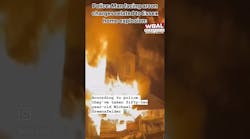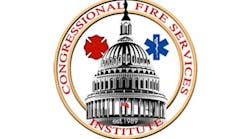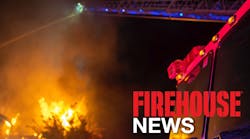Firehouse® Magazine and Volunteer & Combination Officers Section (VCOS) of the International Association of Fire Chiefs (IAFC) have compiled the second annual Combination Fire Department Run Survey, featuring statistics on apparatus fleets, budgets, membership, and 2011 fire and EMS calls. We thank VCOS and the section chairman, Chief Timothy Wall, for their assistance in compiling the data, and we thank the chiefs and departments that participated.
We asked the chiefs of two combination fire departments to evaluate the findings:
• Chief Chris Christopoulos Jr., Lebanon, NH, Fire Department – “Having reviewed the data in previous Firehouse® surveys for full-time and volunteer departments, I was interested in seeing what type of information would be available in the combination survey. One question that constantly gets asked each and every budget year is ‘Is our department cost effective?’ As a fire chief I would need to do further research when selecting communities which are comparable to mine. As another example, for the last several years I have been using information from our total taxable properties (grand list) to compare the costs of providing fire and emergency medical services to other communities in our region.
“I spoke with one of the fire chiefs who responded to the survey to find out what information he might find most valuable. His reply was that he would like to know how many pieces of apparatus and the total annual operating budget a department of comparable population served. Another chief told me he would like to see the data showing several different staffing models for small to mid-sized combination departments. As an example, his department is primarily staffed with full-time personnel, but they utilize part-time “interns” to supplement staffing. He is also interested in learning about how other combination departments staff apparatus.
“I believe there is value to collecting this data for combination fire departments, but fire chiefs must take the time to carefully select and analyze the data for their departments. Fire chiefs need to look further than the numbers in selling the value of their organizations to their residents and community leaders.”
• Chief Norvin Collins, Sauvie Island Fire District, Portland, OR – “Leading an organization, whether from the office of the fire chief or as a company officer, takes an individual who is dedicated, committed and has a passion for making the community a better place to live. An important aspect of leading and managing an organization is comparing your department to similar ones from the local area, across the nation and internationally, if possible. Capitalizing on the successes and learning from the challenges of others can help us make our departments better to meet the needs and reducing the risks of the communities we serve.
“Initial review of the data demonstrated a variance of staffing, stationing, call dynamics and budgeting constraints. My review of the survey included organizing the respondents into regions and size to attempt to compare like departments. Following this regional assessment, call volume and staffing (including number of apparatus when compared to staffing levels) were reviewed to find trending.
“As leaders of the fire service, analyzing how our individual departments compare with contemporaries from different regions gives us the opportunity to validate our costing ratios or give pause for validation if the data reveals a significant difference. One of the challenges that many fire service agencies face is communicating effectively with the population they serve; furthermore, the community may have a very different set of expectations of services the fire department can or should provide.
“Using comparative data, like this survey, can add credibility to assessing internal threats and external opportunities. These internal threats can be a variance between costs to support the number of personnel apparatus, and stations when compared to call volume. An opportunity may be to reach out to one of the regional fire providers to ask how they perform their services at a cost that appears to be more financially responsible. Working together and applying data to validate our business practices will assure our department’s ability to reduce the risks or respond to the needs of our communities.”
The survey results below represent a sampling of the responses received. Complete results will be available soon at GET LINK FROM PETE.





